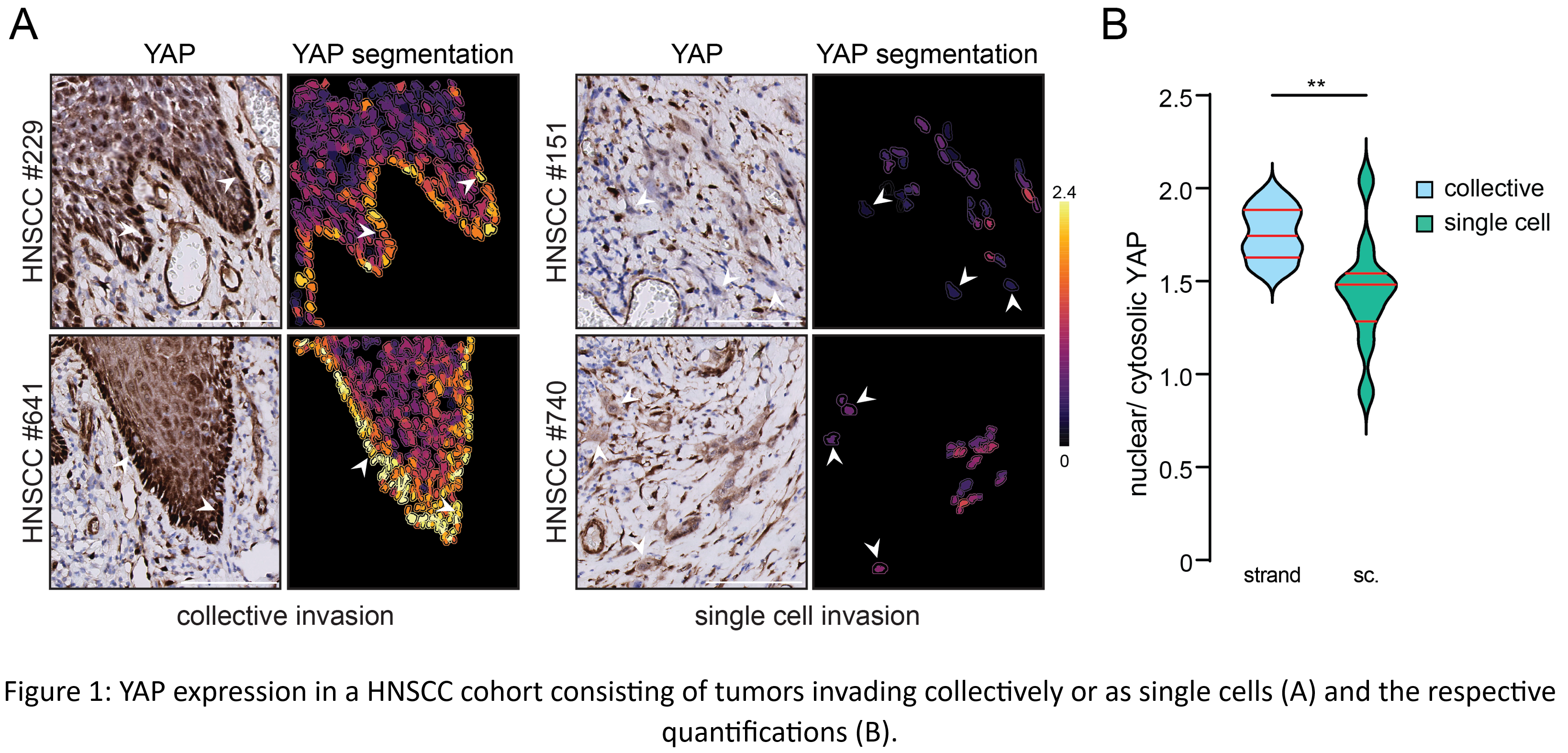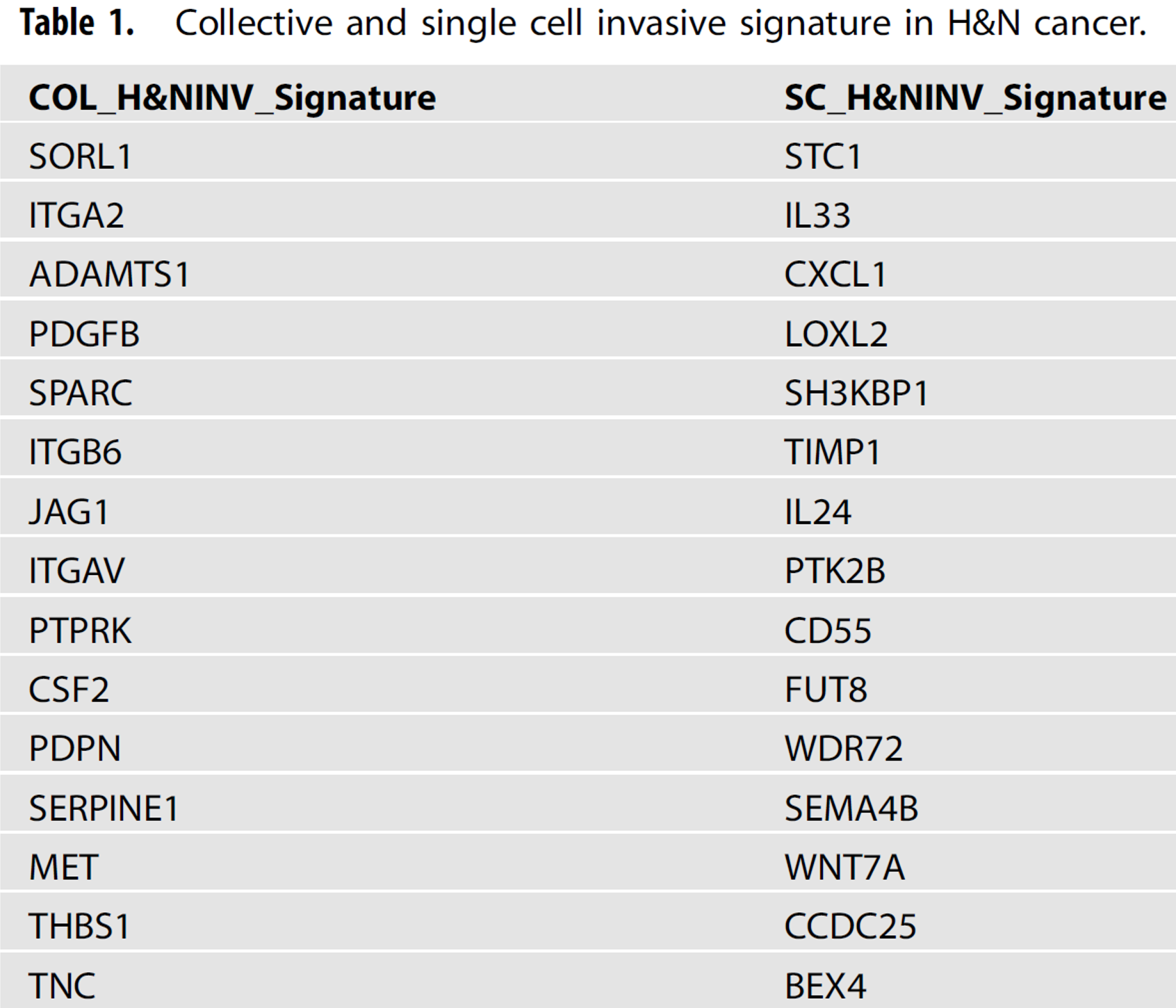Deciphering molecular programs that govern collective and single cell invasion in head and neck cancer
Published in Cancer, Protocols & Methods, and Cell & Molecular Biology

Why study invasion in H&N cancer?
The ramifications of highly invasive HPV-negative head and neck squamous cell carcinoma (HNSCC) in the clinic unfortunately result in positive surgical resection margins that are directly attributed to locoregional relapse and metastatic outgrowth. However, tumor infiltration manifests as diverse invasive patterns in HNSCC including collective or single cell invasion, indicating an underlying complex wiring of invasive phenotypes. Importantly, the pattern of invasion is a recognized-independent prognosticator at the tumor invasive front. By uncoupling collective and single cell invasive programs, new therapeutic options targeting host lethal tumor cells at the invasive front may provide profound survival advantages.
How can we study invasion?
Patient derived organoid (PDO) models provide a unique opportunity to study clinically relevant phenomena during tumor progression. By embedding PDOs in various extracellular matrix networks that resemble aspects of the local underlying tissue structure and function found in patients, molecular profiles governing invasion can be unraveled. To achieve this, we first established a panel of invasive HPV-negative HNSCC PDOs in vitro, which replicate the invasive patterns observed in the primary tissues. We then conducted high-throughput single-cell mRNA transcriptomics to explore the differential expression profiles between invasive and non-invasive conditions, and in a collective versus single cell invading PDO model.
YAP-centered program governs collective invasion
Our analysis reveals that invasive HNSCC PDOs upregulate a YAP-centered transcriptional program, regardless of the invasion mode. However, we found that collectively invading PDO cells exhibit higher levels of YAP transcription targets compared to single-cell invasion. These collectively invading strands are marked by increased nuclear YAP and Collagen fiber alignment at the invasive front (Figure 1A and B). Interestingly, our data suggest that the activation of extracellular matrix receptors on tumor cells dominates the regulation of the Hippo pathway during collective invasion, even in the presence of mature cell-cell junctions.

Invasion pathways and their clinical implication
A key finding of our work is identifying that collective invasion is characterized by a combination of adhesion and migratory YAP-centered pathways. We were able to generate unique invasion signatures, of which the collective signature demonstrated prognostic utility in HNSCC clinical cohorts (Table 1 and Figure 2A and B). Furthermore, the collective signature served as a prognosticator in 7 other solid cancer types, providing novel indications of analogous invasive programs.


Conclusions
In conclusion, we have developed HNSCC PDOs that show diverse invasion patterns in 3D Collagen matrices. Single cell invasion is characterized by immune-like programs, whereas collective invasion is driven by a YAP-centered adhesion and migratory program. Finally, the collective signature is prognostic in multiple solid cancer types including HPV-negative HNSCC. This insight provides a potential avenue for new therapeutic strategies and enhances our understanding of HNSCC invasion dynamics.
Follow the Topic
-
Oncogene

This journal aims to make substantial advances in our knowledge of processes that contribute to cancer by publishing outstanding research.





Please sign in or register for FREE
If you are a registered user on Research Communities by Springer Nature, please sign in
Thank you very much, Dr. Peter Haughton, for this wonderful information. I want appropriate prevention and treatment methods for health and awareness organizations.